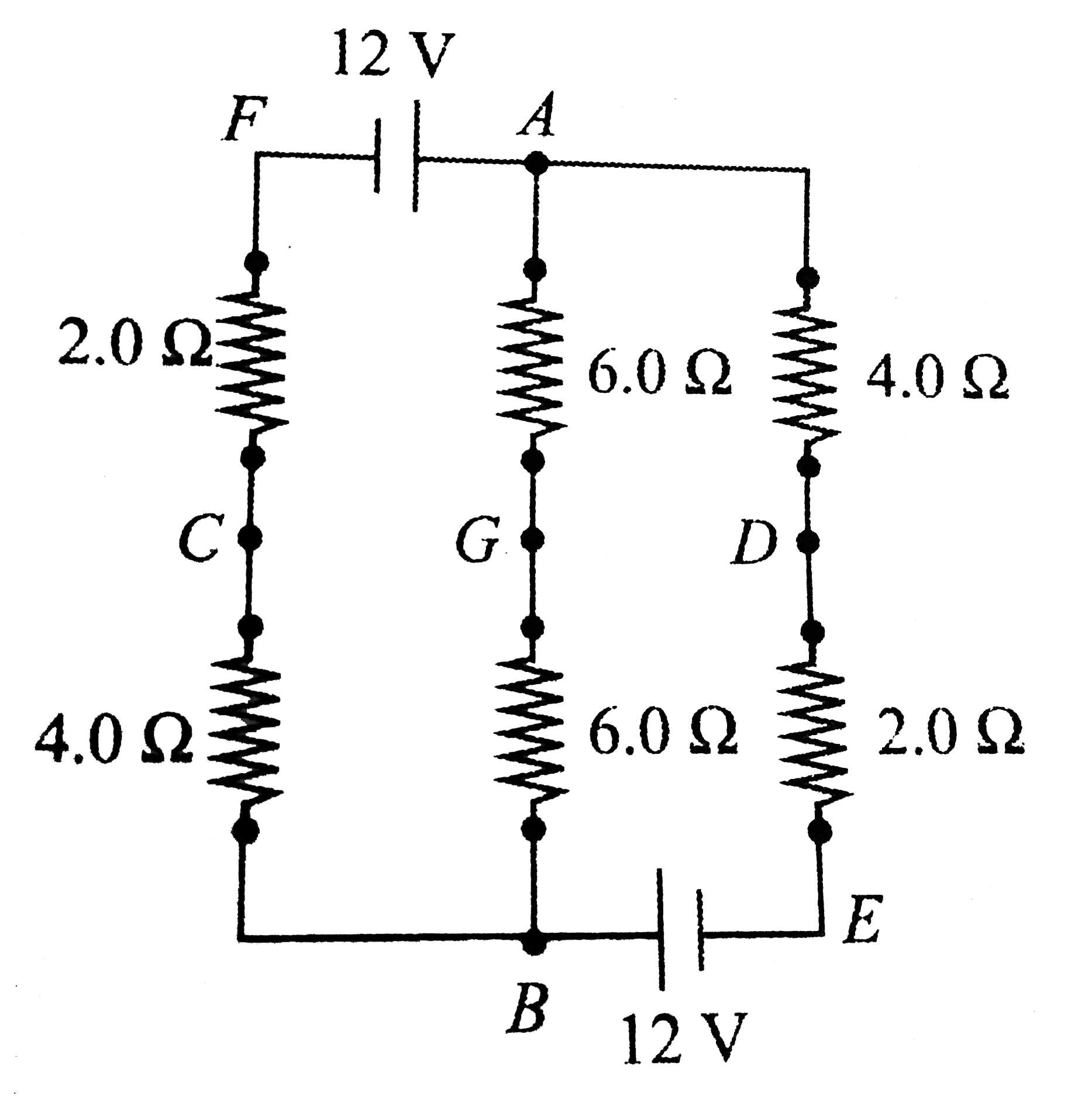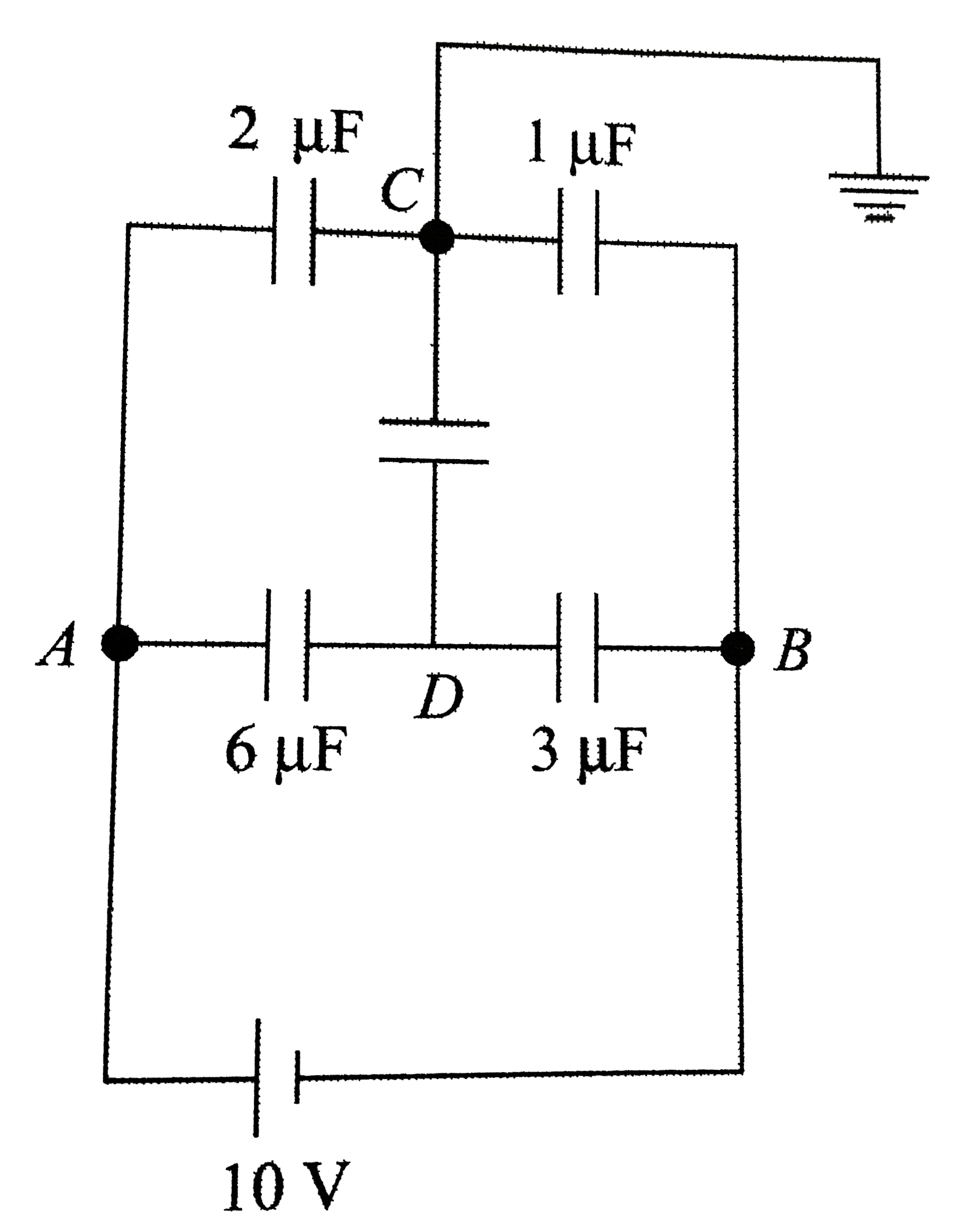in the network of three cells, find the potential V of their funcion.

Video Solution
Text Solution
Applying KCL for the individual branches, we get
Putting from Eqs. (i),
(ii) and (iii) in Eq. (iv). we have
or

|
Topper's Solved these Questions
- ELECTRIC CURRENT AND CIRCUITBOOK - CENGAGE PHYSICSCHAPTER - ELECTRIC CURRENT AND CIRCUITEXERCISE - Subjective
29 Videos
- ELECTRIC CURRENT AND CIRCUITBOOK - CENGAGE PHYSICSCHAPTER - ELECTRIC CURRENT AND CIRCUITEXERCISE - Single Correct
72 Videos
- ELECTRIC CURRENT AND CIRCUITBOOK - CENGAGE PHYSICSCHAPTER - ELECTRIC CURRENT AND CIRCUITEXERCISE - Exercise 5.1
28 Videos
- ELECTRIC CURRENT & CIRCUITSBOOK - CENGAGE PHYSICSCHAPTER - ELECTRIC CURRENT & CIRCUITSEXERCISE - Kirchhoff s law and simple circuits
15 Videos
- ELECTRIC FLUX AND GAUSS LAWBOOK - CENGAGE PHYSICSCHAPTER - ELECTRIC FLUX AND GAUSS LAWEXERCISE - MCQ s
38 Videos
Similar Questions
Knowledge Check
Figure 7.37 shows a network of three resistances. When some potential difference is applied across the network , thermal powers dissipated by A,BandC are in the ratio
 A2:3:4B2:4:3C4:2:3D3:2:4
A2:3:4B2:4:3C4:2:3D3:2:4In the network shown in fig. , the potential differene across A and B is
 A6VBzeroC2VD4V
A6VBzeroC2VD4VIn a network as shown in the figure the potential difference across the resistance 2R is (the cell has an emf of E and has no internal resistance):
 A2EB4E7CE7DE
A2EB4E7CE7DE
For the network of capacirors as shown in.
 .
.
a. Find the potential of junction D.
b. Find the potential of function D,
c. Find the charge on 2μF capacitor.
View SolutionIn the network shown in the figure, the potential difference between A and B is :

View Solutionin the following network, the potential at O is

View SolutionIn the following network, the potential at O is

View SolutionIn the network shown the potential difference between A and B is (R=r1=r2=r3=1Ω,E1=3V,E2=2V,E3=1V)

View Solution


 .
.